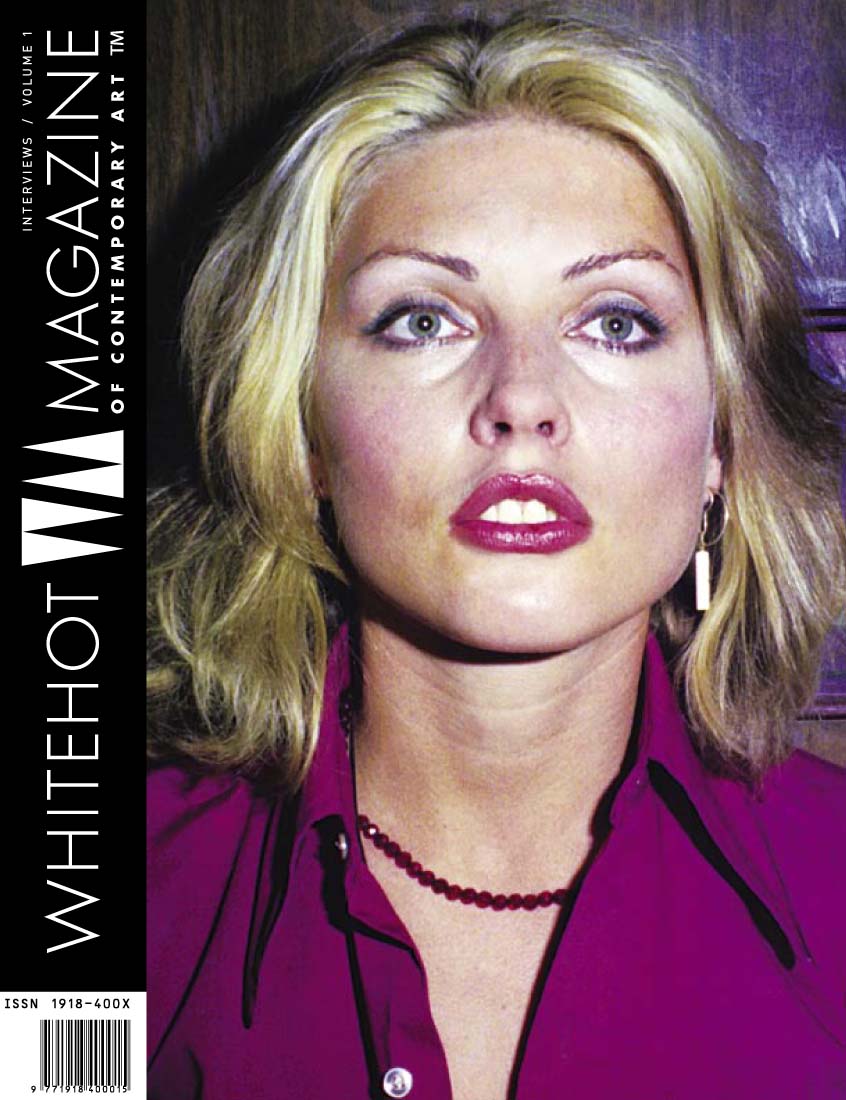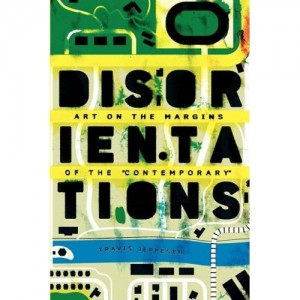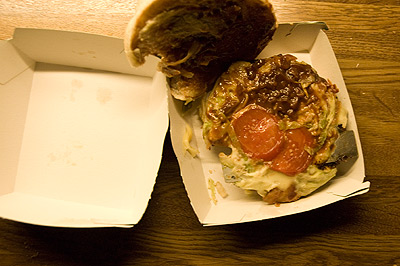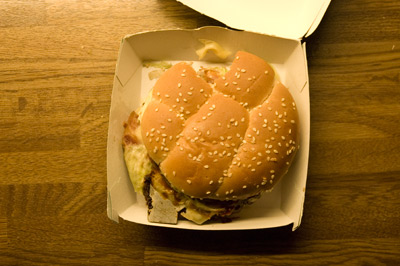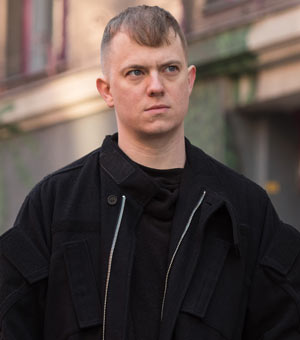Cocksucker Blues
by Travis Jeppesen on November 25, 2008
Where do I get my cock sucked?
Where do I get my ass fucked?
Here, seems. (Shhh…. quiet!)
WhiteHot
by Travis Jeppesen on November 23, 2008
The first print issue of WhiteHot Contemporary Art magazine is now available for purchase.
DISORIENTATIONS Berlin Book Launch
by Travis Jeppesen on November 22, 2008
The book launch for my collection of art criticism, DISORIENTATIONS, will be on November 29th at 19:00
at a new gallery/bar space at Kronenstraße 71, 10117 Berlin
Please contact me if you want to come, I will put your name at the door + any guests you want to bring…
xx
Travis
Without a Name: Jon Campbell
by Travis Jeppesen on November 12, 2008
Below is my catalog essay for Jon Campbell’s exhibition in Paris, which opens on Saturday, November 15th at Galerie Jeanroch Dard.
Faced with the difficulty of writing about Jon Campbell’s work, I can only try and identify the source of that complexity and get through it that way. Because we’re not talking about a simple formal dichotomy here that can be readily broken down – the abstraction is figurative and the figuration is abstract. Nor can I imply that we are witnessing a rendering of the artist’s innermost thoughts without inadvertently digging up the exquisite corpse of surrealism, soliciting the ghost of psychoanalysis. There is nothing gimmicky in these pictures to lend itself to a crude definition – they are without affectation – and there is certainly nothing “cool” about them. None of the blatant infatuation with irony that burdened so much of the painting done late in the last century. We’re in a new century now, and the truth is, I’m writing this during a time when art writing – writing about art – has run out of steam, having bogged itself down in heady conceptual paradigms and didacticism, losing most of its audience in the process. Language, when not directly employed by an artwork, has effectively abandoned us. Jon Campbell feels this abandonment – this lack of language – but on a deeper level, beyond the mere literary. Now artists are expected to become indoctrinated via a multitude of (visual, etc.) languages from a young age. Jon, still at a young age though past his apprenticeship, has already chosen to reject all received languages. This is a daring move to make at any age in our era of mixing-and-matching, “sampling,” whatever you want to call it. It means going at it all alone, without a safety net to fall back on. And this is painful, not just for the artist, but for us, who must contend with the work.
Yet there are also others, present in a series of portraits, executed in an extremely intimate manner in the artist’s cramped studio in a delicate span of some ninety minutes each. They are portraits, and yet there is a sameness to them that effectively obliterates their subjects’ uniqueness. It could be the artist himself we see projected. Lined up together, it is the sum of their expressionlessness that unites these men. They all become the same No One. By Campbell’s own admission, the surfaces of his subjects are far less important than the situation that produces their rigid vulnerability. But this situation is absent – there is no background here to contextualize their placement.
In the accompanying works, what we find is pure situation – but again, without a clear context that lends itself to interpretation. Occasionally a figure may emerge, but it is always accidental – a shape designating a pole of thought, one that is necessarily private. So firm is the artist’s belief in the autonomy of these images that he refuses to name them – for to name is to force an interpretation and to again rely on a fixed referential language as agent.
Campbell’s situations, then, force me to contend with my own battles in the realm of language. Campbell tells me that his grand theme is identity, and what is language but a projection of identity. But identity, in Campbell’s paintings, is always masked. He has no interest in painting a particular personality. If he is evasive, then it branches from the same evasion that ultimately coats all human perception. Painting as a negative act in which the negative loses its value in a sea of specificity. The painter becomes a host of possibilities in this retrospective denial of arrival. What we are left with are the raw recordings, and the invigorating opportunity to explore them without a guide.
Social Disease
by Travis Jeppesen on November 11, 2008
Social Disease, publisher of Disorientations: Art on the Margins of the “Contemporary”, has a new website.
Richard Serra at Gagosian Britannia
by Travis Jeppesen on November 8, 2008
The philosophical rigidity of Richard Serra’s sculptures stands for raw endurance. They last, they extend themselves past momentary interpretations, and yet they are not momentous; rather they nearly pass as organic forms. One at Gagosian is a vaginal maze that you can readily get lost in, its walls narrow and claustrophobic — a metallic birth canal. Visitors express their concern aloud to one another as they move through it — they want to get out as fast as possible, but the further you move, the longer it lasts. There are no easy exits here: once you make the decision to enter, you’re caught. A lot of people won’t make this decision. Too much of a risk. I remember hearing a story, and I don’t know whether it’s true or not, about a Serra sculpture falling on someone and killing them. His work includes this threat, a masculine apology of interruptive force. And yet the wholeness of the shape that’s created, the enclosure it forms, is a nod to classic eternal beauty and all its paradoxes. I think Richard Serra laughs at attempts like these to sum up his work in words. Perfection contains its own criticism, and maybe Serra’s work isn’t quite perfect because it contains nothing but that criticism. The ineffable power of wordless thought; a static intrusion in the zero realm.
Ryan Trecartin at Whitechapel Gallery
by Travis Jeppesen on November 8, 2008
Having sat through so much bad video art in the past, I had until fairly recently come close to giving up on the medium altogether. Lately, however, my prejudices have been dissolving, as a new generation of video artists — people like Mark Ther, Keren Cytter, and Ryan Trecartin — has been opening up possibilities of expression within the medium that don’t necessarily rely on technological wizardry. While wildly disparate in sensibility, if these three artists have anything in common besides the fact that all work in video, it is that they are not afraid to embrace theatrical conventions in their exploration of issues surrounding gender and sexuality. That they also explore these issues in a novel way — without falling back on tired theoretical conventions — is not only refreshing, but necessary.
Ryan Trecartin is showing several short videos now at the Whitechapel Gallery in London. He’s an artist who has embraced not only the gallery scene, but the Internet as well — many of his videos can be downloaded for free online. His videos are non-narrative freak-out films that attempt to capture the amplified reality of a teenage acid trip. Actors are dressed in ridiculously colorful costumes and forced to regurgitate lines that sound like they were scripted for some sort of metaphysical soap opera; think Richard Foreman crossed with the hyper-banality of some MTV reality show. Despite their apparent formlessness, the films are so interesting that you can watch them continuously and still discover hidden meanings each time. Here’s hoping we’ll be seeing a lot more of Ryan Trecartin in the future.
McDonald’s Razor Burger
by Travis Jeppesen on October 28, 2008
Yeah, I know. This isn’t about art, and it’s not like you need another reason to not eat at McDonald’s. But this was so hardcore, I couldn’t resist reporting it – especially since no explanation whatsoever has been forthcoming from McDonald’s HQ, which confirms my impression that they simply don’t care about either their customers or their stockholders.
A few weeks ago, after a long drinking session, we ended up at the Hermannplatz McDonald’s in the Neuköln district of Berlin. Imagine my surprise when I opened up my L.A. Beef Barbeque to find this. Notice anything special (besides the fact that it looks extra disgusting than the usual McDonald’s culinary efforts)?
A little bit of silver, perhaps?
That’s right – what appears to be a huge razor blade in the sandwich.
Think about that next time you get a Mac Attack. Or at least take a good long look at what you’re about to bite into, or else it may very well be the last thing you ever taste. <shiver>
3. PORN FILM FESTIVAL BERLIN: The Last Day
by Travis Jeppesen on October 27, 2008
The 3. Porn Film Festival Berlin reached its ecstatic climax last night with a screening of Claudette, winner of the Maleflixx.TV Award for Best Gay Film at this year’s festival – even though it’s not a gay film or even a pornographic film, but rather an intimate hour-long portrait of one of Switzerland’s leading sex work activists, who just happens to be a 69-year-old hermaphrodite prostitute named Claudette. Claudette herself was on hand to answer questions after the screening, and put everyone else to shame at the after party, getting down on the dance floor into the wee hours of the morning. I guess this is as good a demonstration as any of the fact that an active sex life keeps you healthy and fit, as Claudette tells a group of students in the film. The fact that she also happens to be a bike racing champion might also have something to do with this amazing lady’s enviable prowess.
I was also fortunate to catch Wrangler: Anatomy of an Icon yesterday. In recent years, the porn star documentary has effectively become its own genre, as rigidly codified as pornography (or horror) itself. Wrangler is different because Jack Wrangler himself is (seemingly) such an anomaly. He was a pioneer who was able to enjoy his success and never became a victim of the industry that elevated him to superstardom. It’s nice to see a positive portrayal of a porn star for once.
Afterwards, I stayed to watch one of Wrangler’s best known features (from the first, gay part of his career), A Night at the Adonis. Filmed on location at the Adonis cinema in New York, the movie is a celebration of gay sexuality in its heyday. Watching the film in a movie theatre, at a film festival, in 2008, brought up a lot of interesting issues. The film is a porn movie about guys watching porn in a cinema and fucking to it. As audience members, are we supposed to watch this in a strictly “historical” context, ignoring the stimulating content or pretending that it doesn’t arouse us? Two guys in back of me seemed to answer this question as it popped into my brain. As far as I know, they were the only ones in the audience doing anything sexual as A Night at the Adonis played. Everyone knows that porn lost a lot in terms of quality in the transition from film to video to where we are today, and a lot of that has been blamed on technology. I agree to an extent, but watching A Night at the Adonis in the context of the Porn Film Festival made me realize another important fact that wouldn’t have occurred to me otherwise: namely, that whereas porn films were once made to fuck to, now they are made for the purposes of masturbation. Porn is no longer a public spectacle, but a private ritual – one that is meant to be hidden, that we are supposed to be ashamed of. Yet another reason why events like the Porn Film Festival are so necessary – to get rid of that stigma and treat sexuality as something that should be celebrated, rather than muted.

